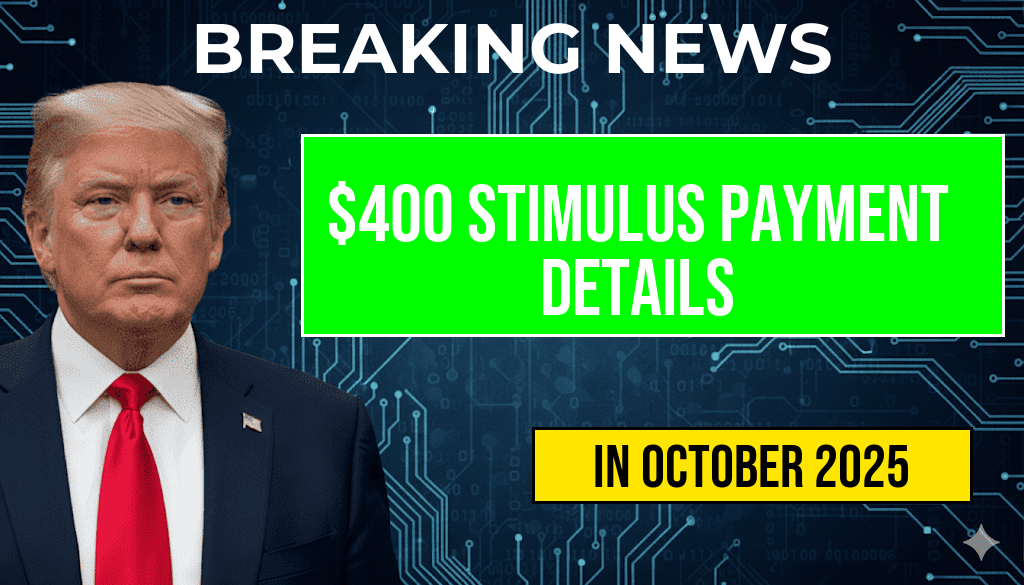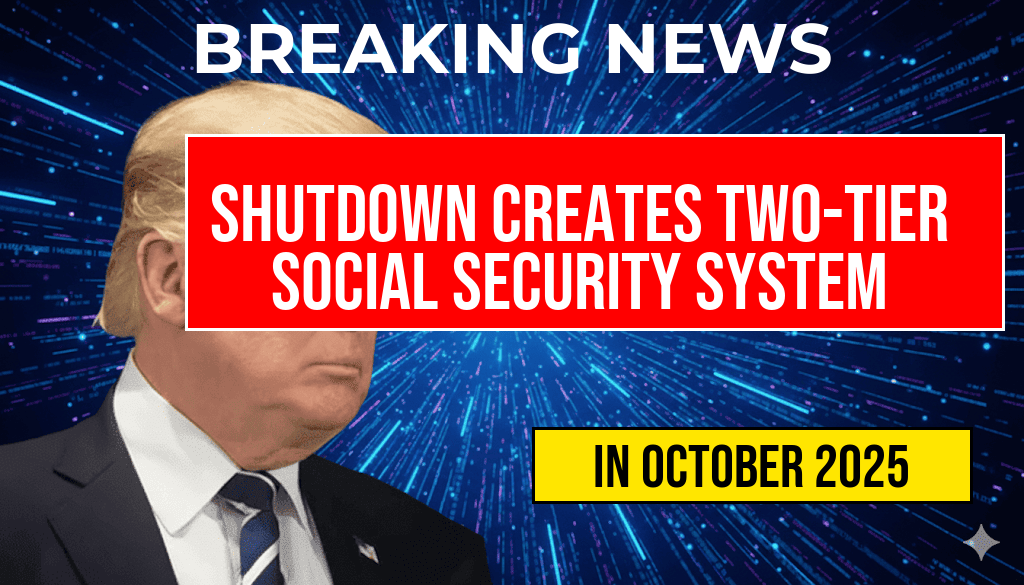A new stimulus payment of up to $400 is now available to eligible Americans, providing financial support amid ongoing economic challenges. The program aims to assist individuals and families facing increased expenses, offering a straightforward application process and a clear payout schedule. Eligibility criteria have been outlined by federal and state agencies, with most qualifying recipients receiving their payments directly through bank transfers or mailed checks. The complete payment schedule spans several weeks, depending on the applicant’s location and submission date. This initiative reflects continued efforts to bolster household finances and stimulate local economies. For those interested, detailed eligibility requirements, application procedures, and payout timelines are outlined below, along with links to authoritative sources for further information.
Understanding the $400 Stimulus Payment
Who Qualifies for the $400 Stimulus?
- Individuals earning less than $75,000 annually
- Married couples with combined income under $150,000
- Dependents and elderly individuals residing in qualifying households
While the specifics may vary slightly by state, most recipients must meet income thresholds and demonstrate residence within the eligible jurisdiction. Certain categories, such as low-income seniors or individuals with disabilities, are prioritized for expedited processing.
How to Determine Eligibility
Applicants should verify their eligibility through official government portals or local agencies. Criteria typically include income documentation, proof of residence, and valid identification. Many states have simplified online forms, reducing the need for extensive paperwork.
Application Process and Required Documentation
Steps to Apply
- Visit the official stimulus payment portal or your state’s economic support website.
- Complete the online application form with personal information and income details.
- Upload necessary documentation such as tax returns or pay stubs, if required.
- Submit the application and await confirmation of receipt.
Applicants are encouraged to apply promptly, as some states have limited windows for submission. For individuals without internet access, phone applications or in-person assistance may be available.
Documentation Needed
- Valid photo ID (driver’s license, state ID)
- Proof of income (tax returns, pay stubs)
- Proof of residence (utility bills, lease agreements)
Payment Schedule and Distribution Details
Timeline for Payments
| Application Submission Period | Estimated Payment Date |
|---|---|
| Early January – Late January | February 15 – February 28 |
| Late January – February | March 1 – March 15 |
| March and onward | Within 4–6 weeks of submission |
Most payments are issued via direct deposit, with mailed checks available for those without bank accounts. Recipients can track their payments through official portals or by contacting customer service.
How Funds Are Distributed
Eligible individuals will receive up to $400 per qualifying household, with the total amount depending on household size and income level. The payment is intended as a one-time benefit, but some states may offer repeat disbursements or additional assistance programs.
Additional Resources and Support
For comprehensive guidance, applicants can consult the official IRS website or your state’s economic development agency website. These sources provide updates on application status, payment methods, and contact information for assistance.
Local community organizations and financial counseling services may also offer support for navigating the application process or managing the funds once received.
Frequently Asked Questions
Question
Who is eligible to receive the $400 stimulus payment?
Answer
Eligible recipients include individuals and families who meet specified income and filing requirements as outlined in the eligibility criteria for the $400 stimulus payment.
Question
What are the eligibility requirements to qualify for the $400 stimulus payment?
Answer
Eligibility is determined based on factors such as income level, tax filing status, and residency. Specific thresholds and criteria are provided in the official guidelines to ensure qualified applicants receive the payment.
Question
When is the complete payment schedule for the $400 stimulus payments?
Answer
The payment schedule is outlined in the article, with distribution dates spanning from initial disbursements to final payments, ensuring recipients know when to expect their $400 stimulus.
Question
How can recipients check the status of their $400 stimulus payment?
Answer
Recipients can verify their payment status through official government portals or designated online tools provided in the article, which offer real-time updates on payment processing.
Question
Are there any additional requirements or steps to receive the $400 stimulus?
Answer
Yes, recipients may need to submit a tax return, register online, or meet other verification steps as specified in the article to ensure they qualify and receive their $400 stimulus payment.
The federal government has announced a new $400 stimulus payment available to eligible individuals across the United States. This initiative aims to provide financial relief amid ongoing economic challenges, with a streamlined application process and clear eligibility criteria. Eligible recipients can expect to receive their payments through direct deposit or mailed checks, depending on their registration preferences. The payment schedule is designed to distribute funds over a specific period, ensuring timely assistance for those in need. This article offers a comprehensive overview of the eligibility requirements, how to apply, and the complete payment schedule to help Americans understand how and when they can receive their stimulus funds.
Who Qualifies for the $400 Stimulus Payment?
Eligibility Criteria
- Income Limits: Individuals earning up to $75,000 annually or households with a combined income up to $150,000 are eligible. Income is based on the most recent tax return or income documentation.
- Filing Status: Taxpayers must have filed a federal tax return for the previous year or meet specific criteria if not required to file.
- Residency Requirements: Applicants need to be residents of the United States, including U.S. territories, with valid Social Security numbers.
- Age and Citizenship: The payment is available to U.S. citizens, permanent residents, and qualifying resident aliens of any age.
Additional Considerations
Individuals receiving other forms of federal assistance, such as Social Security or unemployment benefits, may automatically qualify for the payment without additional application. However, those who do not typically file taxes might need to submit a simplified form or register through designated portals.
How to Apply for the Stimulus Payment
Automatic Eligibility and Payment Delivery
Most eligible individuals who filed a tax return in the previous year or are enrolled in government benefit programs will automatically receive their $400 stimulus via direct deposit or mailed check, depending on their existing payment preferences. The IRS has emphasized that no additional action is required for these recipients.
Manual Registration Process
For those who are not automatically enrolled, such as recent immigrants or individuals who did not file taxes last year, a dedicated online portal has been established. Applicants will need to provide basic information, including:
- Name and Social Security Number
- Address and contact details
- Bank account information for direct deposit
Processing times may vary, but the IRS has committed to issuing payments promptly once applications are approved.
Complete Payment Schedule
| Application Period | Payment Distribution Start Date | Expected Completion Date |
|---|---|---|
| January 1 – January 31 | February 15 | February 28 |
| February 1 – February 28 | March 10 | March 20 |
| March 1 – March 31 | April 5 | April 15 |
Payments will be issued in batches, with the IRS updating the status of distribution on their official website. Recipients can track their payment status using the IRS Get My Payment tool.
Additional Resources and Support
Individuals seeking more information about eligibility, application procedures, or payment status can visit the official IRS website or consult trusted financial advisory sources. The IRS has also set up a dedicated helpline to address common questions and technical issues related to the stimulus program.
For more details on federal relief programs, including updates on other stimulus initiatives, visit Wikipedia’s page on stimulus packages or check recent reports from Forbes.
Frequently Asked Questions
Who is eligible to receive the $400 stimulus payment?
Individuals and families who meet the eligibility requirements outlined in the article, including income thresholds and residency status, are eligible to receive the $400 stimulus payment.
What are the key eligibility requirements for the stimulus payment?
The main eligibility requirements include meeting specific income limits, being a resident within the qualifying area, and having filed a tax return or qualifying documentation during the designated period.
When will the complete payment schedule be announced?
The article provides a complete payment schedule, including important dates for application, processing, and distribution, ensuring recipients know when to expect their stimulus payments.
How can eligible recipients claim or verify their stimulus payment?
Recipients can claim or verify their payment through the official government portal or by checking their account details as provided during the application process.
Are there any additional requirements for recipients to receive the stimulus payment?
Yes, some recipients may need to provide additional documentation or meet specific criteria, such as filing taxes or updating their information, to ensure timely payment.






